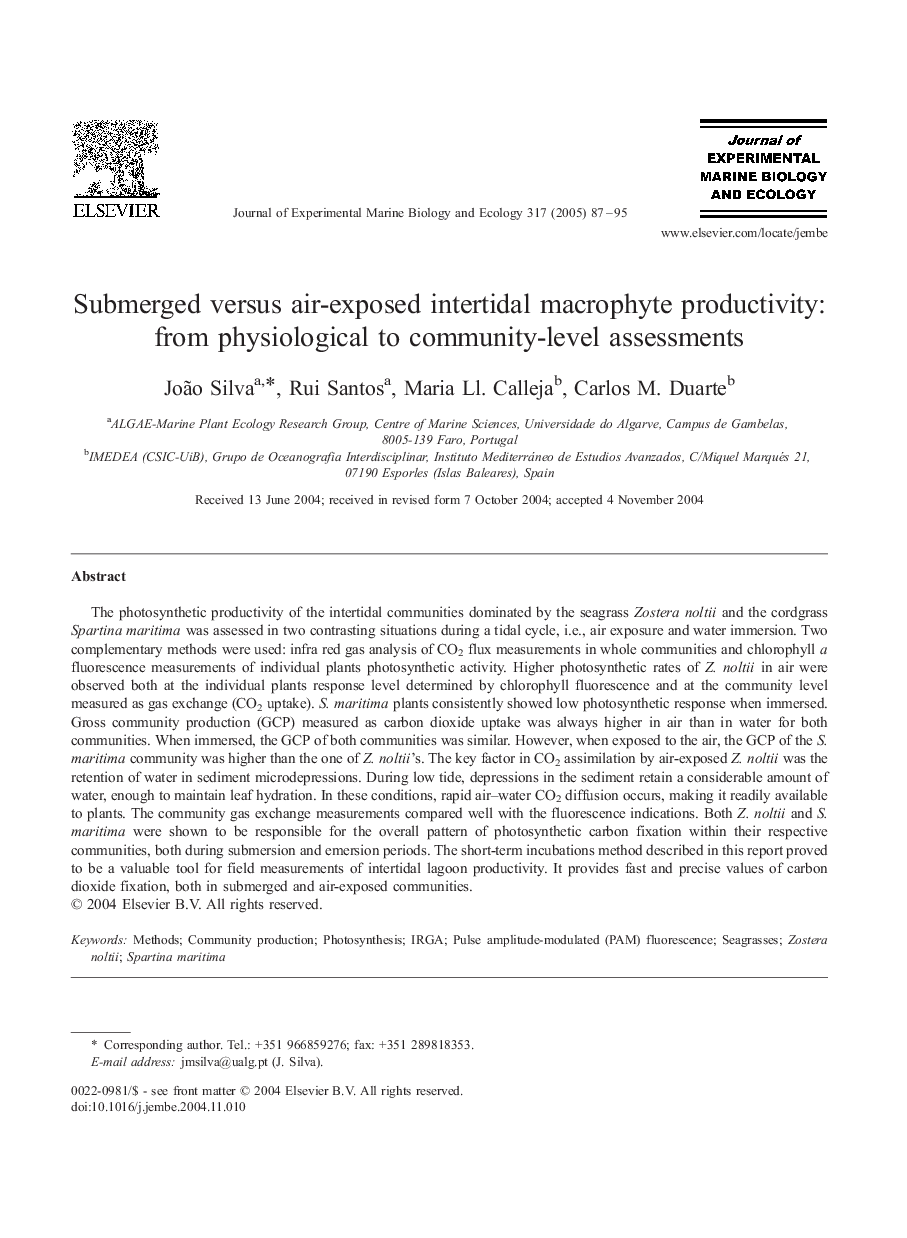| Article ID | Journal | Published Year | Pages | File Type |
|---|---|---|---|---|
| 9448851 | Journal of Experimental Marine Biology and Ecology | 2005 | 9 Pages |
Abstract
The photosynthetic productivity of the intertidal communities dominated by the seagrass Zostera noltii and the cordgrass Spartina maritima was assessed in two contrasting situations during a tidal cycle, i.e., air exposure and water immersion. Two complementary methods were used: infra red gas analysis of CO2 flux measurements in whole communities and chlorophyll a fluorescence measurements of individual plants photosynthetic activity. Higher photosynthetic rates of Z. noltii in air were observed both at the individual plants response level determined by chlorophyll fluorescence and at the community level measured as gas exchange (CO2 uptake). S. maritima plants consistently showed low photosynthetic response when immersed. Gross community production (GCP) measured as carbon dioxide uptake was always higher in air than in water for both communities. When immersed, the GCP of both communities was similar. However, when exposed to the air, the GCP of the S. maritima community was higher than the one of Z. noltii's. The key factor in CO2 assimilation by air-exposed Z. noltii was the retention of water in sediment microdepressions. During low tide, depressions in the sediment retain a considerable amount of water, enough to maintain leaf hydration. In these conditions, rapid air-water CO2 diffusion occurs, making it readily available to plants. The community gas exchange measurements compared well with the fluorescence indications. Both Z. noltii and S. maritima were shown to be responsible for the overall pattern of photosynthetic carbon fixation within their respective communities, both during submersion and emersion periods. The short-term incubations method described in this report proved to be a valuable tool for field measurements of intertidal lagoon productivity. It provides fast and precise values of carbon dioxide fixation, both in submerged and air-exposed communities.
Related Topics
Life Sciences
Agricultural and Biological Sciences
Aquatic Science
Authors
João Silva, Rui Santos, Maria Ll. Calleja, Carlos M. Duarte,
